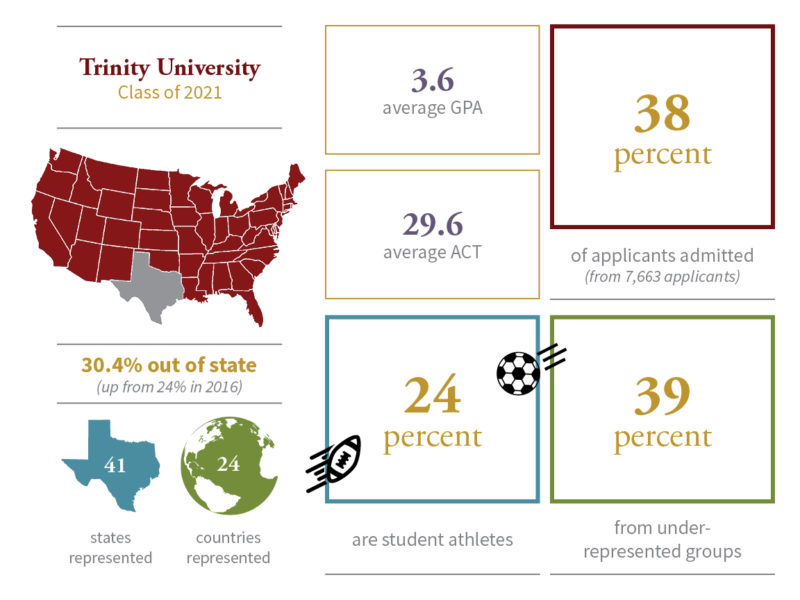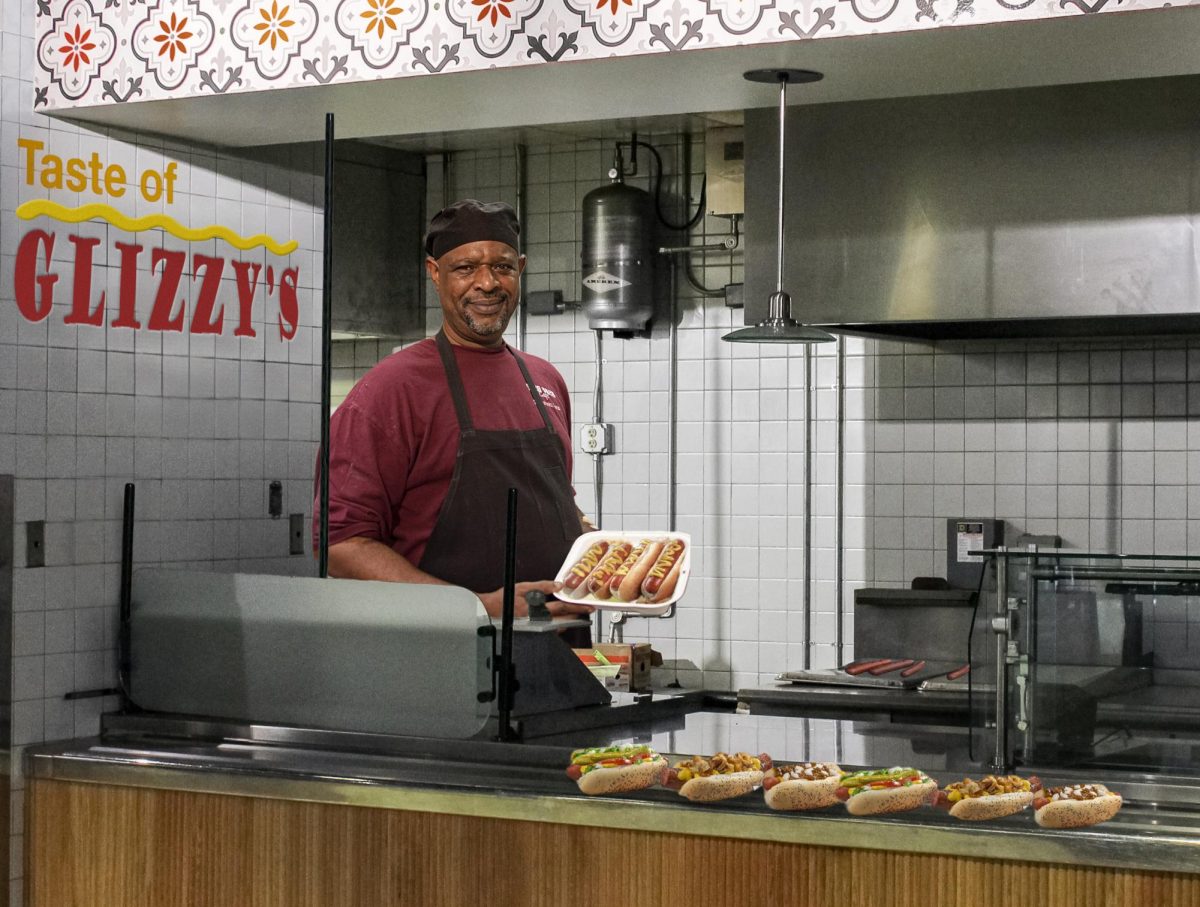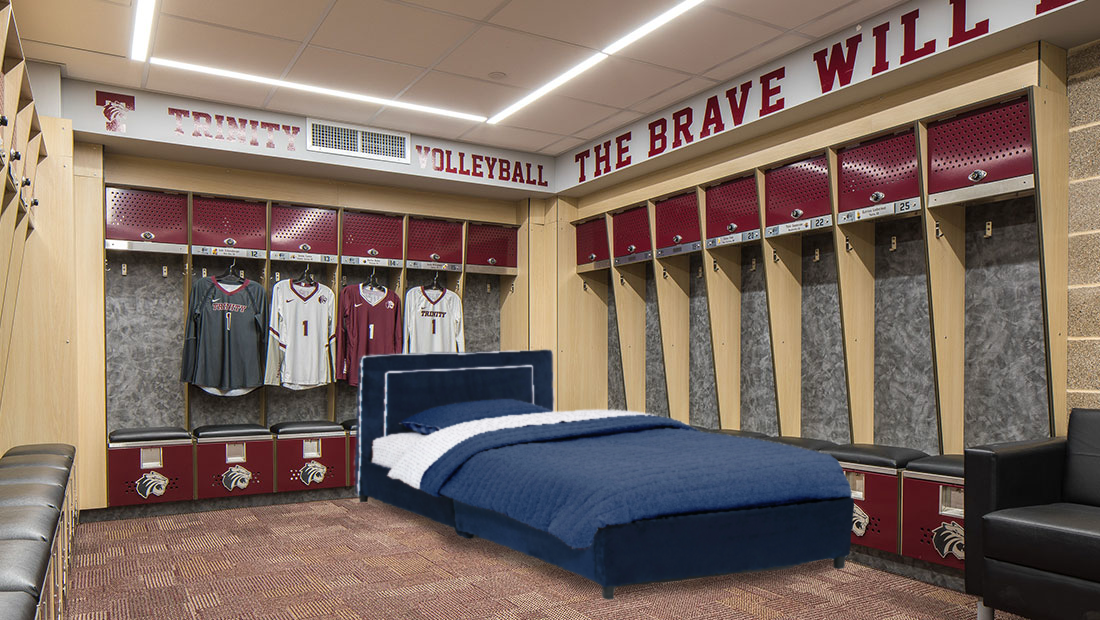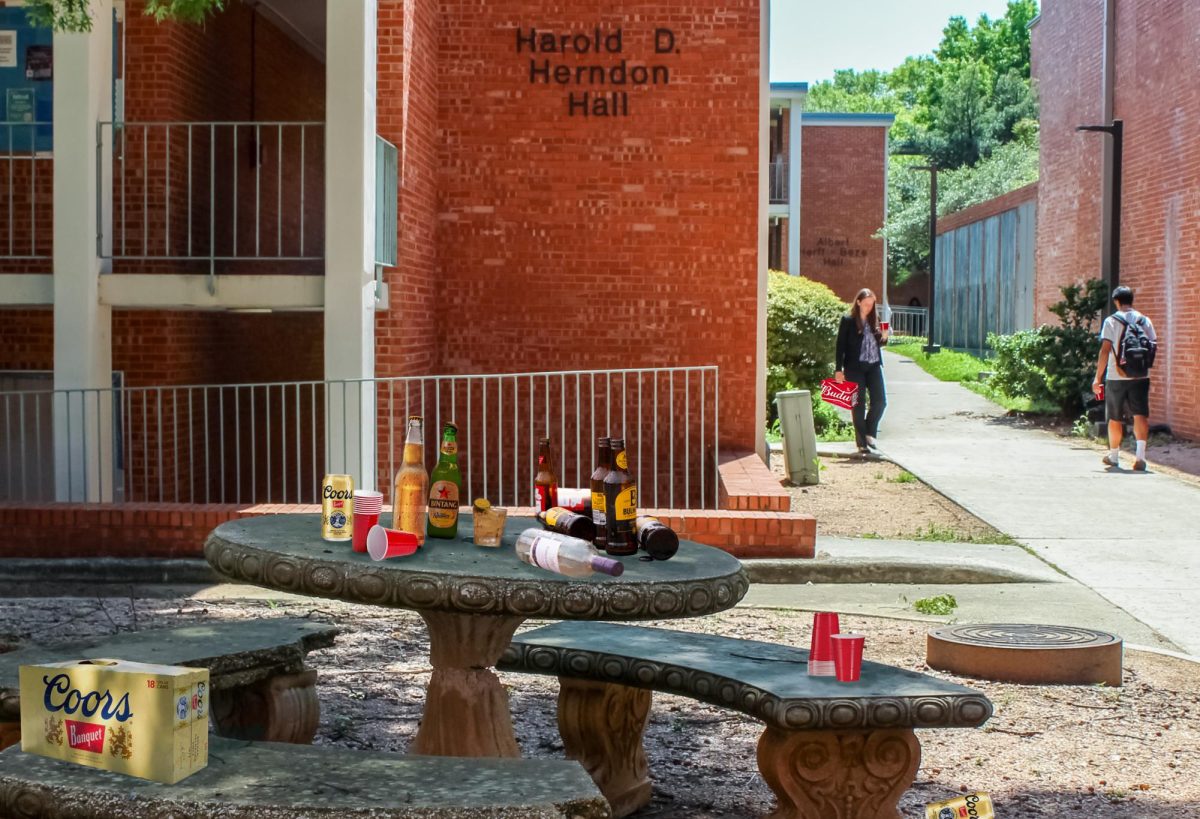As fall semester rolls around, Trinity gets ready to welcome a new class of first-years “” and the class of 2021 already stands out, both in size and academics.
“This was the largest applicant pool in university history, and that is sitting at about 7,663 applications, and we admitted 38 percent,” said Eric Maloof, vice president for enrollment management. “It is the lowest acceptance rate on record, and is the most selective, largest and most competitive. As of today, we have 647 first-years starting, and also 25 transfers.”
This low acceptance rate has made the class of 2021 one of the most academically competitive classes to date, with an average GPA of 3.6 and average ACT score of 29.6, both higher than Trinity’s past classes have been. First-year Dylan Stansbury said he is eager to capitalize on his experience.
“I’m just really excited for the opportunities this school provides us with. “¦ It’s a welcoming new environment, so I know I’ll be making a lot of friends”, Stansbury said in an email. “All the professors are dedicated to their students in a way that can drastically change how we view our studies.”
Academics is not the only thing that attracts new students. Trinity’s diversity is another feature that particularly draws in first-years. In this incoming class alone, 54 percent of students are female, and 39 percent of the entire class are from underrepresented groups. Twenty-four countries and 41 states are represented, with an increase in the number of out-of-state first-year students from 24 percent last year to 30.4 percent this year.
“It’s a strong class academically, and an incredibly diverse class “¦ not just racially and ethnically but also geographically and socioeconomically,” Maloof said.
The university encourages incoming students to embrace social aspects of student involvement as well as maintaining academic excellence. As diversity signals a vibrant student life, Trinity eagerly welcomes this incoming class, said David Tuttle, dean of students, in an email interview.
“We are always excited when a new class comes to campus,” Tuttle said. ” They have been admitted because they are qualified and deserve to be at Trinity. We chose them, and they chose us, probably because they saw themselves in the students already here. This is how a student culture sustains itself. The new students likely met other bright, clever, inquisitive, involved and fun students and felt like they belonged here. They do.”
In order to recruit such a strong class, the admissions team has undergone several strategic changes to better promote diversity. One new recruitment tool is a more active social media presence, ranging from advertisements on platforms such as Facebook, to increasing direct mail sent to prospective students.
“I think that there’s a much greater demand for the university right now, and a lot of that has to do with the partnership with the division of enrollment management and the division of marketing,” Maloof said. “We’ve been more aggressive in promoting the Trinity brand digitally, electronically, through mail and through how we travel.”
However, the admissions department does not foresee an increase in the number of students who will be admitted. Trinity’s website boasts a nine to one student-faculty ratio, something that Maloof argues the university will continue to maintain even as it makes large purchases similar to the City Vista property.
“We are not trying to grow the university; the goal will continue to be 640 students. What we would like to do is have more choice. We would like to have an applicant pool that allows us to make difficult choices,” said Maloof. “Those who are most successful are students who care about their own learning. They care a great deal about others, being community members, and are involved and they’re excited about being here.”







